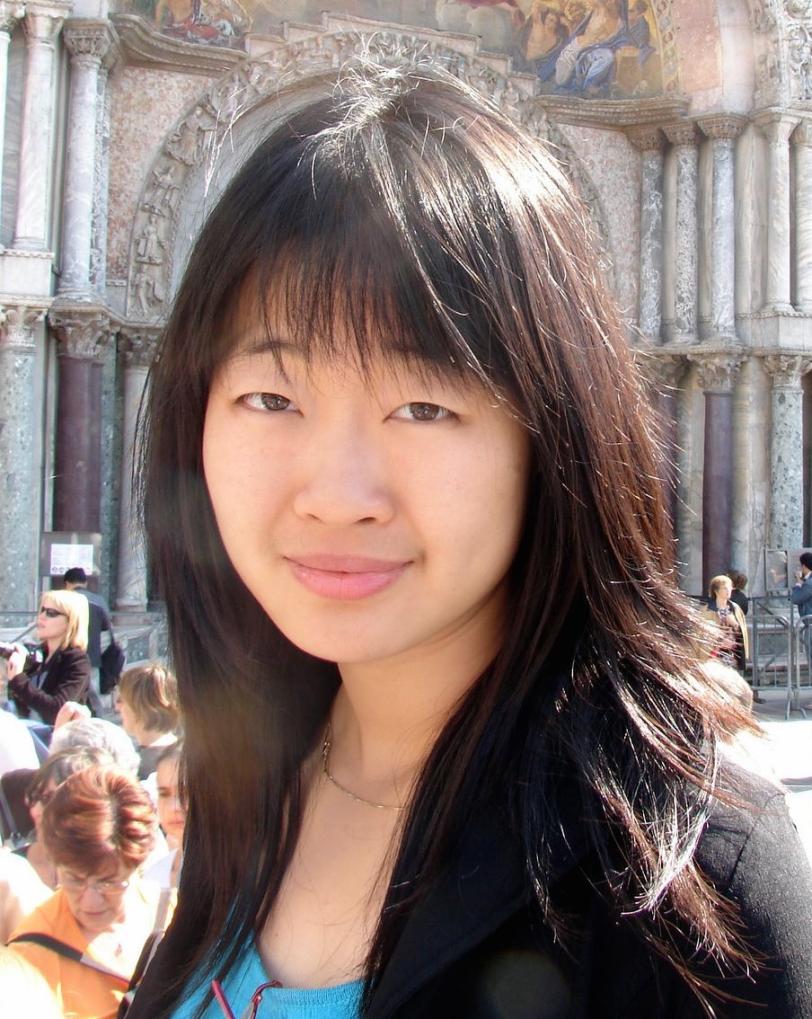Ying Diao Honored with 2014 Spicer Award for Her Work at SSRL
Ying Diao, a postdoctoral researcher who brought key innovations to a printing technique for flexible electronics and solar panels, will receive an award for her X-ray studies at SLAC.
Ying Diao, a SLAC/Stanford postdoctoral researcher who brought key innovations to a printing technique for flexible electronics, solar panels and other uses, has been selected to receive this year's William E. and Diane M. Spicer Young Investigator Award.
The award recognizes Diao's work at SLAC's Stanford Synchrotron Radiation Lightsource, a DOE Office of Science User Facility. It honors SLAC synchrotron pioneer and Stanford University professor William "Bill" Spicer, who died in 2004, and wife Diane, who died in 2009, and is presented annually by SSRL and the SSRL Users' Organization. The award ceremony will be held Oct. 9, during the LCLS/SSRL Annual Users' Meeting and Workshops.
"I was surprised and honored to receive this award," said Diao, who in 2011 joined research groups led by Stanford Professor Zhenan Bao and SSRL's Stefan Mannsfeld as a member of SIMES, the Stanford Institute for Materials and Energy Sciences. "It's humbling because I know how much previous recipients have achieved to earn this award, and I admire many of them."
While she hadn't had much experience in X-ray science while pursuing her PhD in chemical engineering at the Massachusetts Institute of Technology, she welcomed the opportunity to engage in X-ray studies at SLAC's SSRL. "I had dreamed about using synchrotron facilities," she said. "I was very much drawn to deciphering structures using X-rays." She quickly became a regular participant in SSRL experiments.
Diao has been an author in 20 scientific publications since 2011, serving as lead author for eight of those, including a Nature Materials publication detailing the printing technique, dubbed FLUENCE, that she developed. This technique combines multiple innovations to precisely print semiconductors. One key innovation uses a blade embedded with tiny pillars to "comb" ink that is spread on a heated layer. The ink solution dries, crystallizing into a semiconductor material.
Diao drew upon her background in chemical engineering and studied fluid modeling software to help find the right design for the tiny features of the printing blade that smoothly mixes the ink and improves the electrical performance of the material.
She has logged countless hours at multiple SSRL beamlines to study the properties of the features produced by the printing technique.
Diao's latest efforts have focused on adapting the technique for printed organic solar cells. She has also been conducting real-time studies of the processes she helped develop at SSRL, and said she looks forward to new applications for the printing technique, including commercial and industrial uses.
Mannsfeld, now a professor at Dresden University of Technology, wrote in his letter of support for the Spicer award that Ying's research represents a "groundbreaking accomplishment" and a leap for the entire organic electronics community: “She was able to absorb all important concepts and principles in a very short time and displayed not only a very sharp intelligence but also an extraordinary work ethic."
In a separate letter, Bao wrote that Ying "is a rising star" with a diligent persistence and "intellectual depth in understanding difficult and complex problems." She also noted Diao's knack for assisting students. "Her scientific scope, productivity and vision suggest that she will lead a productive career," Bao wrote.
Diao reflected on her own interest in science and mentoring students: "As a kid I was incredibly curious and always bothered my mom with the 'why' questions. This curiosity has pushed me toward the academic route, and today I really enjoy working with students and inspiring young minds."
In January, Diao will become an assistant professor in the Department of Chemical Engineering at the University of Illinois at Urbana-Champaign, and she said she looks forward to returning to SSRL as a visiting scientist.
Contact
For questions or comments, contact the SLAC Office of Communications at communications@slac.stanford.edu.
SLAC is a multi-program laboratory exploring frontier questions in photon science, astrophysics, particle physics and accelerator research. Located in Menlo Park, Calif., SLAC is operated by Stanford University for the U.S. Department of Energy's Office of Science.
SLAC National Accelerator Laboratory is supported by the Office of Science of the U.S. Department of Energy. The Office of Science is the single largest supporter of basic research in the physical sciences in the United States, and is working to address some of the most pressing challenges of our time. For more information, please visit science.energy.gov.






